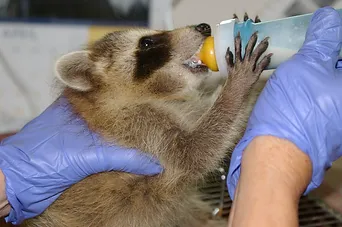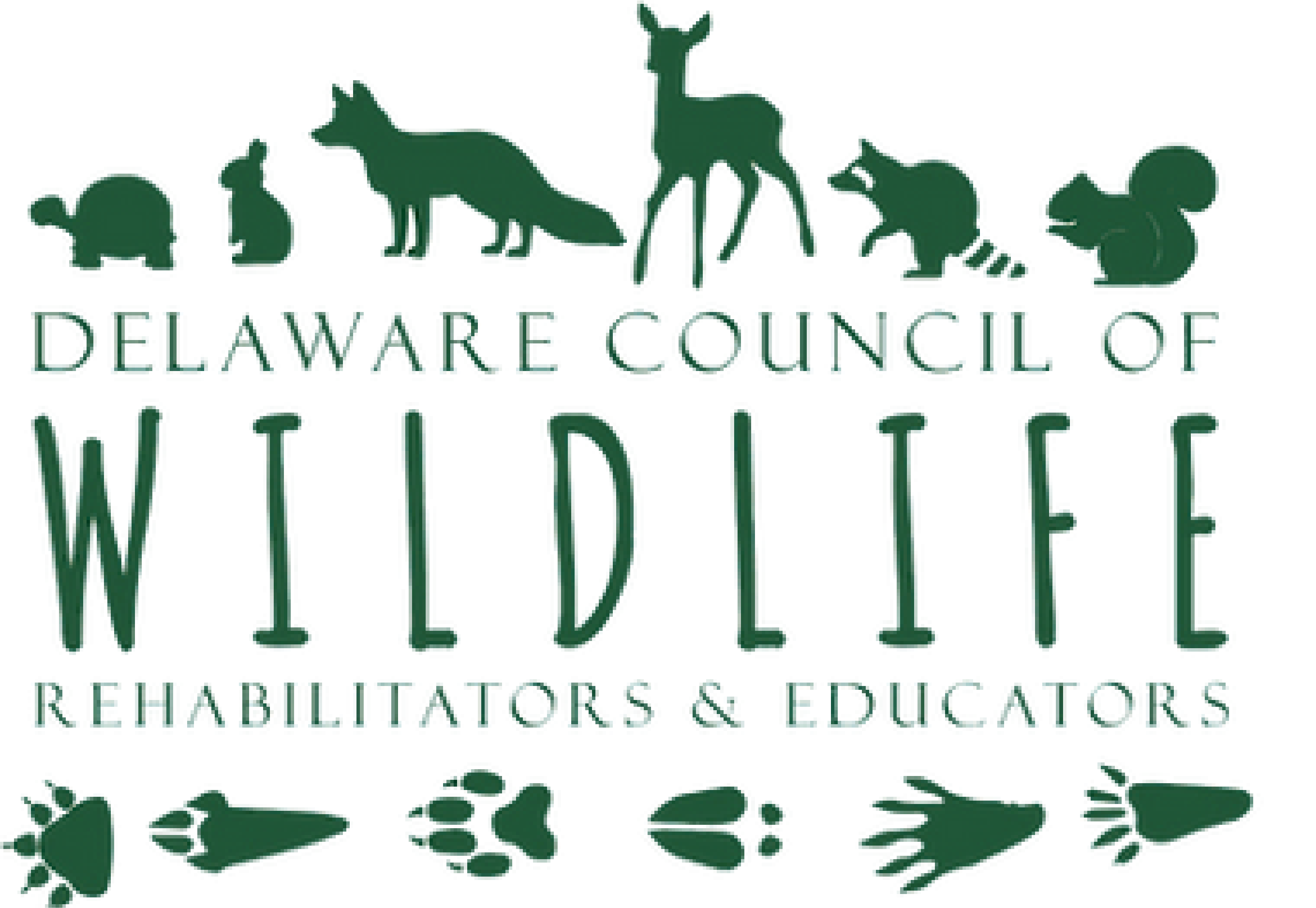

Raccoon (Procyon lotor)
Rehab Criteria: If baby raccoons have been alone for more than a few hours, they are probably an orphaned. Mother raccoons don’t let their young out of their sight for long. Put an inverted laundry basket over the baby (with a light weight on top so they cannot push their way out) and monitor them until well into the nighttime hours (raccoons are nocturnal, so the mom should come out at night to reclaim her baby). You can also put the cub in a pet carrier and close the door. Instead of latching it, prop it closed with an angled stick. When the mother returns, she’ll run in front of the carrier, push over the stick and the door will pop open.
If the mother does not return, contact us for assistance. In spring and summer, people often set traps in a misguided effort to resolve garbage and other “nuisance” issues. Unfortunately, this approach leads to trapped and killed mothers who leave their starving young behind. If anyone in your neighborhood is setting traps, persuade them to use more humane and effective methods instead.
*Potential to carry rabies. Likely to carry Baylisascaris Procyonis (raccoon roundworm).
When rescuing small wild animals, it’s a good idea to wear gloves. Be aware, however, that gloves provide only a small amount of protection, and that most mammals can easily bite through them. Raccoons, skunks, bats and some foxes are more likely than other mammals to carry rabies, but any wild animal may carry the disease. There are a number of other serious or fatal diseases that can be transmitted to humans, so you must take care that the animal doesn’t bite you.
Do not handle raccoons with bare hands as the rabies virus can enter a cut or open wound on your skin. This can also result in the animal(s) being euthanized and tested for rabies.
Family Life: Raccoons breed from January through March. Gestation is approximately 2 months long resulting in most babies (cubs) being born in late winter or early spring. An average litter is 3-6 cubs which are born blind. They are covered in dark fur. Between 18-24 days old, the cubs begin to open their eyes. By four-six weeks old they are walking and beginning to explore. By 10 weeks they are adventuring outside their cozy den. They are nursed for a little over two months and it is not until they are about four to five months old that they begin to forage on their own. The cubs will stay with their mother for close to a year. They will not reach their full size until closer to their second year.
Predators: Coyotes are the strongest predators of the raccoon. Snakes, eagles, hawks and owls are a major predator of young raccoons. Raccoons will often stay in the den during the day to avoid dangerous interactions but if confronted by a predator they will often fight to escape.
Other significant threats: Large dogs, humans. Special considerations/Interesting facts: Raccoons are mostly nocturnal. They have excellent night vision and sharp hearing. It also prefers to be solitary (as an adult). Raccoons can climb very high, they run up to 15mph, and are also excellent swimmers. During the winter a raccoon will often sleep for a couple weeks at a time, but it does not technically hibernate. They are very vocal animals and make up to 200 different sounds to communicate using a variety of noises including hisses, growls, whistles, screams, purr, chitter, and snarls.
